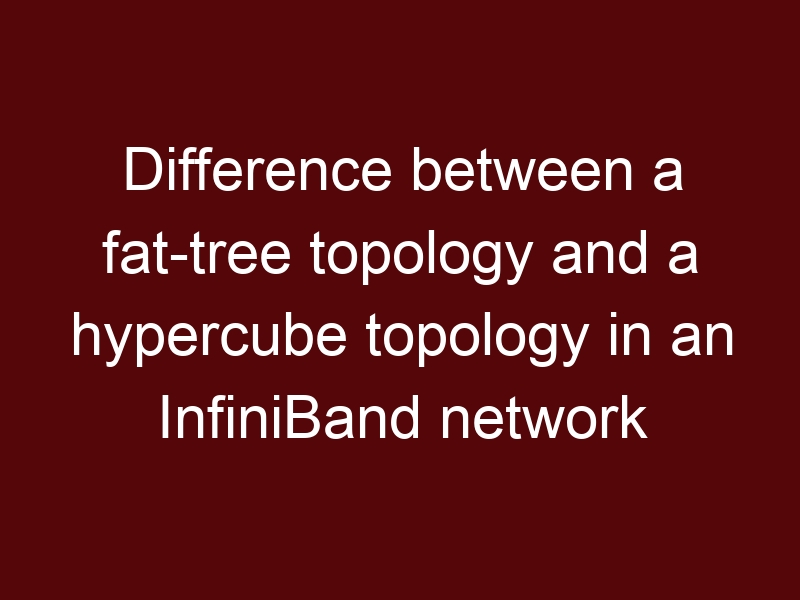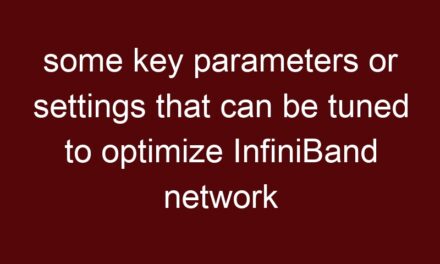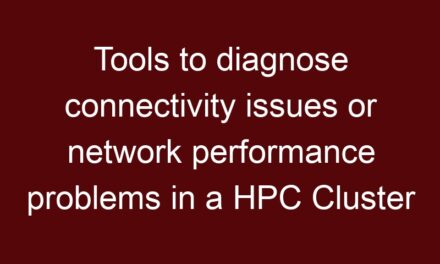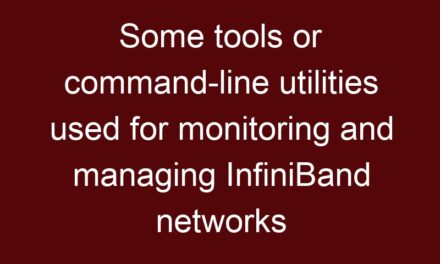Both fat-tree and hypercube are high-performance network topologies commonly used in InfiniBand networks for connecting a large number of nodes efficiently. However, they have different structures and characteristics. Let’s delve into the differences between these two topologies:
Fat-Tree Topology:
A fat-tree topology is designed to provide a scalable and non-blocking network fabric that minimizes bottlenecks and congestion. It’s commonly used in data centers and HPC environments to ensure high bandwidth and low latency.
Structure:
- A fat-tree consists of multiple levels, including the root switches, aggregation switches, and leaf switches.
- Nodes (servers or compute resources) are connected to the leaf switches.
- Each aggregation switch connects to multiple leaf switches.
- The root switches are connected to the aggregation switches.
Advantages:
- Non-blocking: Fat-tree topologies are designed to have enough links and switches to ensure non-blocking communication, allowing full bandwidth between any two nodes.
- Scalability: As the number of nodes increases, fat-tree topologies can be expanded by adding more aggregation and leaf switches.
- Low Latency: The multiple levels of switches help distribute traffic and minimize the distance data needs to travel, resulting in lower latency.
Disadvantages:
- Complexity: Building and maintaining a fat-tree network can be complex due to the number of switches and cables involved.
- Higher Cost: The increased number of switches and cables can lead to higher hardware costs.
Hypercube Topology:
A hypercube topology is a more compact and structured approach, providing a well-defined pattern for connecting nodes. It’s often used in tightly coupled systems for parallel processing.
Structure:
- A hypercube topology is based on the concept of a hypercube, where each node is connected to exactly log2(N) other nodes, where N is the total number of nodes.
- Each node has a binary address, and the connections are determined by the binary digits of the addresses.
Advantages:
- Simplicity: Hypercube topologies have a regular and predictable structure based on binary addressing, making them easier to configure and manage.
- Deterministic Routing: The binary addressing scheme allows for deterministic routing, where the path between any two nodes is well-defined.
- Scalability: Hypercube topologies can scale efficiently with the number of nodes, as the number of connections each node has grows logarithmically.
Disadvantages:
- Limited Redundancy: Hypercube topologies have limited redundancy, and the failure of certain nodes or links can result in connectivity issues.
- Higher Latency: The fixed binary addressing scheme can lead to longer paths for some communication patterns, resulting in higher latency for certain connections.
In summary, a fat-tree topology provides non-blocking scalability with multiple levels of switches, ensuring low latency and high bandwidth. A hypercube topology, on the other hand, offers a structured and predictable pattern of connections, making it simpler to manage and scale. The choice between these topologies depends on the specific requirements of the InfiniBand network and the intended use cases.





